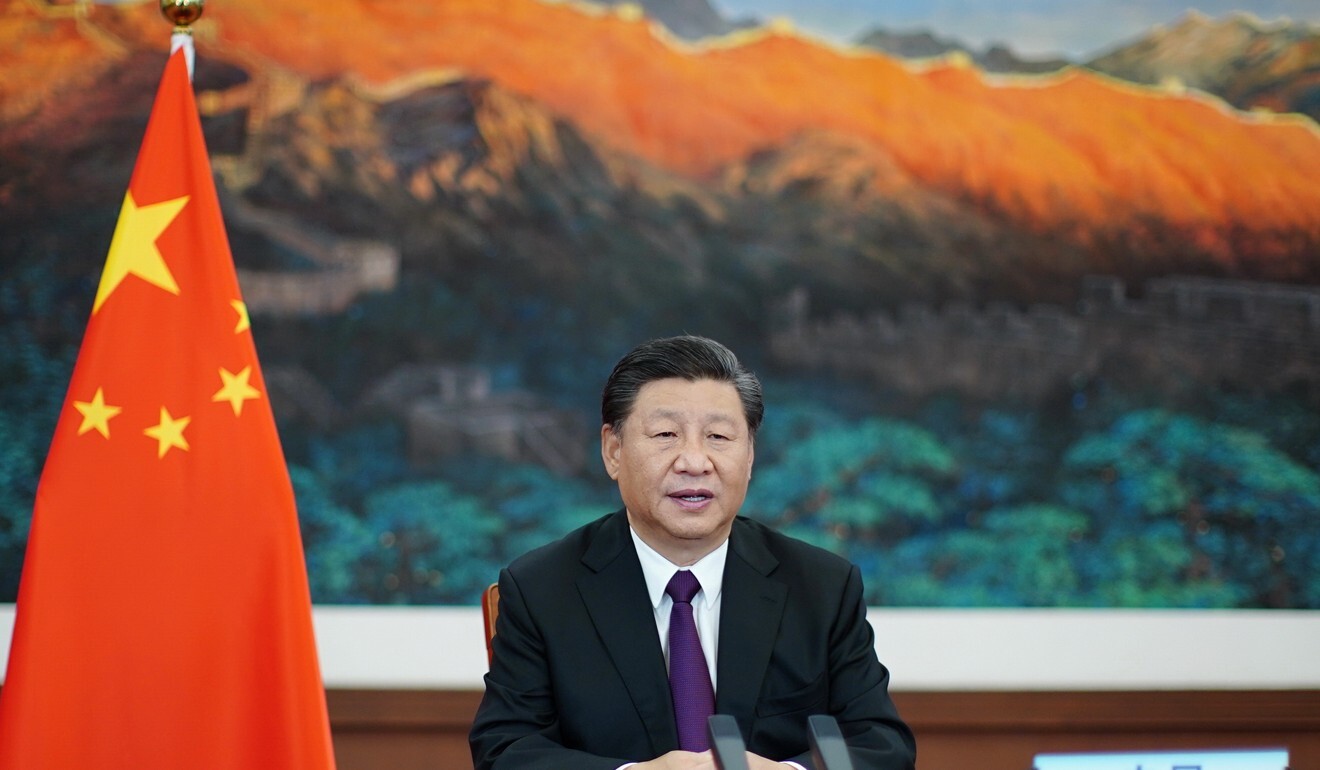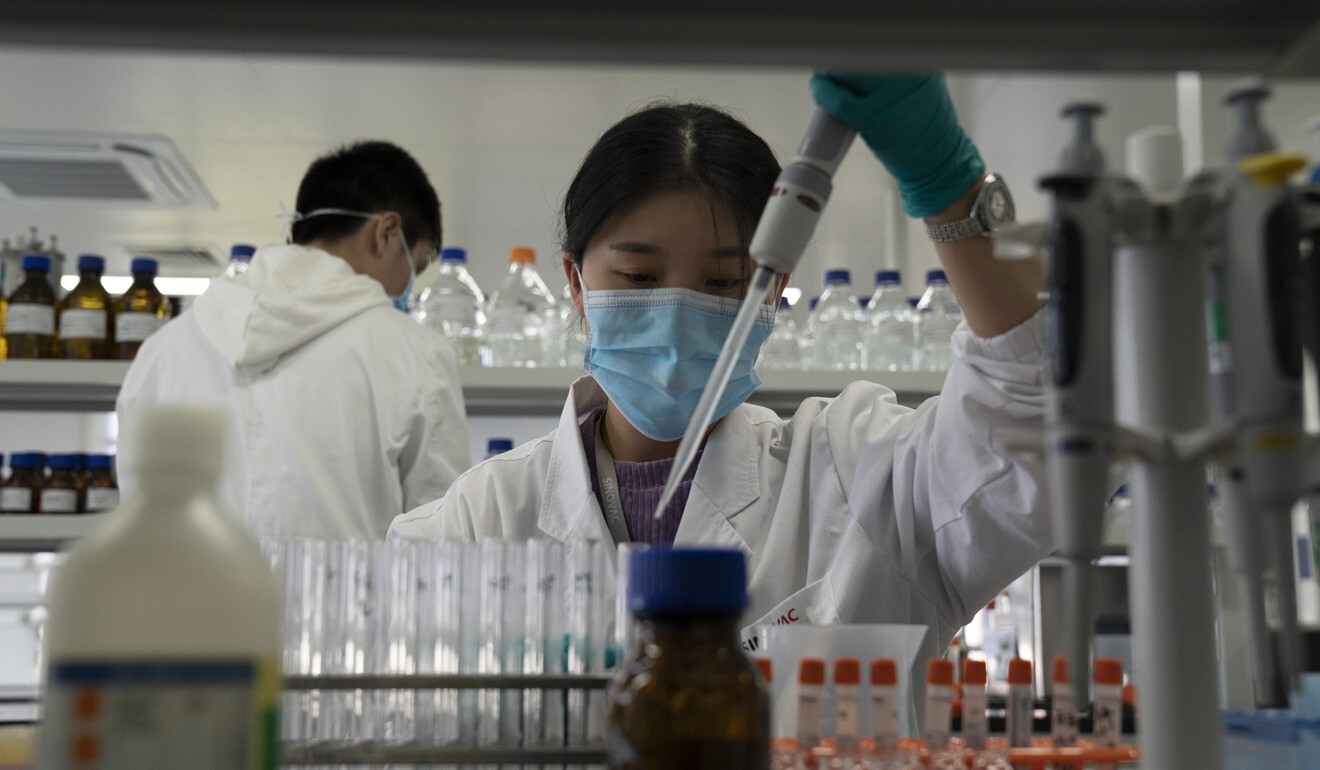
China spent a record 2.2 trillion yuan on R&D in 2019 but needs to do more to escape US tech strangulation
- China has been studying Washington’s list of embargoed or controlled technologies as a guide to what it needs to focus on
- US is keeping up the pressure by using federal power to develop new, cutting-edge technologies
Whatever the outcome of the upcoming US elections, most analysts agree that the tech rivalry between the US and China is unlikely to let up any time soon and therefore Beijing is expected to keep doubling down on its catch-up efforts.
China’s Ministry of Science and Technology last week vowed once again to look carefully at how the work of researchers is evaluated, ensuring that the focus is on research that “achieves real performance” as opposed to simply counting the number of publications.
This is part of Beijing’s wider drive to close a core science gap with the US and reduce its dependence on imported technology. Measures to revise the evaluation of researchers began in 2018 as part of a push to address a “paper-only” mindset and cover other criteria, such as academic titles, degrees attained and awards.
Zhang Yewen, a professor of electrical engineering at Tongji University in Shanghai, said that although some progress had been made, awards are still being made to some scientists simply for having papers accepted by influential journals. Zhang said this needs reform although he acknowledged it cannot be stopped altogether.
“If you don’t refer to any of the four criteria, including which journal someone is published in, how can you evaluate their work,” said Zhang. “These judgments can only be made within a very small scientific circle and the public might not be aware of how we do this.”
World can benefit from China science
Amid the tech and trade war, China is seeking greater self-sufficiency in some core technologies such as semiconductors, and leadership in emerging areas such as artificial intelligence and next-generation mobile networks.
To this end, China has been studying Washington’s list of embargoed or controlled technologies as a guide to what it needs to focus on over the next decade. Beijing wants to avoid “being strangled” technologically, said Bai Chunli, president of the Chinese Academy of Sciences (CAS) earlier this month.
Chinese President Xi Jinping has called several times for greater self-sufficiency in core tech.
“Amid fierce international competition, unilateralism and protectionism, we must work out our own way to upgrade, become more innovative and make more breakthroughs from scratch,” he was quoted as saying at a science forum in September by state news agency Xinhua.

China’s spending on R&D broke a record last year, reaching 2.2 trillion yuan (US$324 billion), according to data released last month by three Chinese government agencies, covering the private and public sectors. That represented 2.23 per cent of China’s GDP – another record high.
But even though it is catching up with the US in terms of money spent on R&D – and enjoys some advantages such as relatively cheap labour and collective, long-term planning – decoupling risks could expose its weak spots, analysts say.
Research holds key to China science push
“China’s advantages in science and technology development lie in having relatively low labour costs, including cultivating talent, and a collective force,” said Cao Cong, a science policy expert at the University of Nottingham’s Ningbo campus in China.
The US, which focused on building up its military and space exploration as a national R&D strategy after World War II, is fighting back though and is now using federal power to develop new, cutting-edge technologies.
The White House in August unveiled plans to invest US$1 billion in artificial intelligence and quantum science. In May, some lawmakers proposed a bold US$100 billion Endless Frontier Act to “bolster US tech leadership and combat China”.
This followed a report prepared by the US congressional research service entitled “Emerging Military Technologies: Background and Issues for Congress”, which said that although the US was the leader in many advanced technologies, China and Russia were making steady progress.
The US spent US$580 billion on R&D in 2018, according to the latest available data from the Federation of American Scientists, which compiles reports for the congressional research service.
US-China tech war fuels battle over semiconductors, Taiwan
Its R&D expenditure in 2018 accounted for 2.8 per cent of annual GDP, slightly higher than China’s rate of 2.1 per cent for the same period. This compares with 2000 though, when the US recorded expenditure of 2.6 per cent, compared with China’s 0.9 per cent, according to the Organisation for Economic Co-operation and Development.
Amid rising tensions with the US, China has had to downplay some of its catch-up efforts, such as the Made in China 2025 industrial blueprint and the Thousand Talents Plan, designed to attract the nation’s best brains back to the motherland.
In reality though, the pace has not slowed. Earlier this year, for example, China introduced a US$1.4 trillion new tech infrastructure investment push for developments ranging from 5G and AI to autonomous driving.

“One of China’s key advantages is developing technology for its giant consumer goods market,” said Yue Su, principal China economist at the Economist Intelligence Unit. “China will continue to form its tech policy around this advantage to ensure investment returns.”
Tongji University’s Zhang cautioned that collectivism does not always work.
“There are advantages in both a liberal and collective approach towards scientific development. Each has different characteristics. Collective force works better in applied engineering projects,” said Zhang.
China expert warns against total focus on self-reliance in chips
“For research not focused on the ‘here and now’ but instead on future issues that require a long course of work and accumulation, a liberal system is better.”
Beijing’s urgency to tackle these issues has been increased by the US government steadily adding more Chinese universities and research institutes to its blacklist, known as the “Entity List”.
“[Economic] decoupling may force China to alight from the high-speed train of globalisation and depend on its own efforts. China still depends on foreign technology in terms of chips, operating systems, and cutting-edge lab equipment,” said the University of Nottingham’s Cao.
Tarun Chhabra, a senior fellow at the Center for Security and Emerging Technology (CSET), a think tank at Washington-based Georgetown University, underlined the danger for China.
“If the US and its allies move to control critical ‘chokepoint’ technologies on a united and multilateral basis, while also investing in their own long-term competitiveness, the impact on China’s science and technology ambitions could be significant,” said Chhabra.
China sees a chance to close US core tech gap with AI chips in 5G era
“I’m taking extra caution with the lab equipment [imported from the US] as any repair service requires a special licence,” Zhang said, after his own university was added to the US Commerce Department’s “unverified list” last year.
“It’s hard to find made-in-China alternatives, although Chinese device makers have been making progress in recent years, they still lag behind [in quality],” he said.
Some analysts pointed out that US moves to restrict visas for top Chinese science talent working there could benefit Beijing’s catch-up efforts.
These moves “could drive top scientific talent back to China,” said CSET research fellow Zachary Arnold, who added that China’s advantages in R&D included “lower costs for skilled labour and its robust system for transferring and adapting innovations from abroad.”
Meanwhile, China should expect no let-up in its tech war with the US should Democratic presidential nominee Joe Biden win the upcoming election.
“Both areas [AI and quantum science] will be emphasised no matter who wins, but Biden will likely provide more resources,” said Gregory Tassey from the Economic Policy Research Center at the University of Washington.


